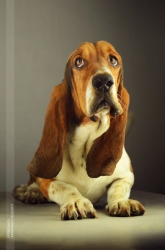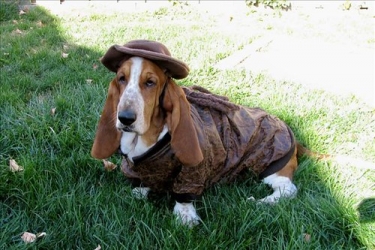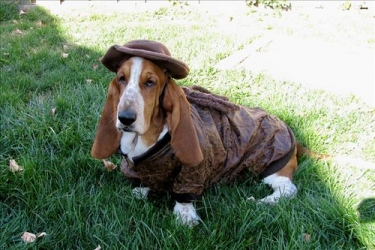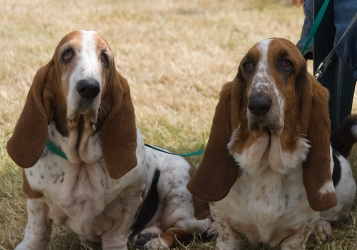Basset Hound
Basset Hound Behavior and Temperment
| Indoor Activity | Outdoor Activity | Vigor | Consistant Behavior |
| Dominance Strange Dogs | |
| Territorial | |
| Good With Children | |
| Good With Strangers |
Foremost among all of the hunting bassets, the Basset Hound is also the most popular. This breed is of French origin, English selective breeding, and American development. The Americans spread this breeds around the world. American breeding kennels have been able to meet the great demand for Bassets everywhere, especially in Europe. Basset Hounds are endeared for their long, train like body, large dangling ears, wrinkled forehead, and melancholy expression.
The popularity of the Basset Hound goes back several centuries. In A Midsummer Nights Dream, Shakespeare described the breed as having "ears which sweep away the morning dew". The Basset Hound was shown at the Paris Dog Show in 1863. Shortly after, England's King Edward VII became on of the breeds most earnest breeders. It was called the "Cyrano of dogs" due to its long nose, which gives it an exterior sadness, while its heart brims with poetry and delicacy.
Basset Hounds serve as hunting dogs, in open country as well as the lairs of its prey. It's used for hunting fox, hare, pheasant, opossum, and squirrel. While Basset Hounds are not known for being particularly fast, they have a keen sense of smell; second among the breeds to only the Bloodhound.
Basset Hounds make great pets; with their charming disposition. They are known for being devoted to their owners and friendly to children. One source notes that "even their bark has a pleasant tone".






